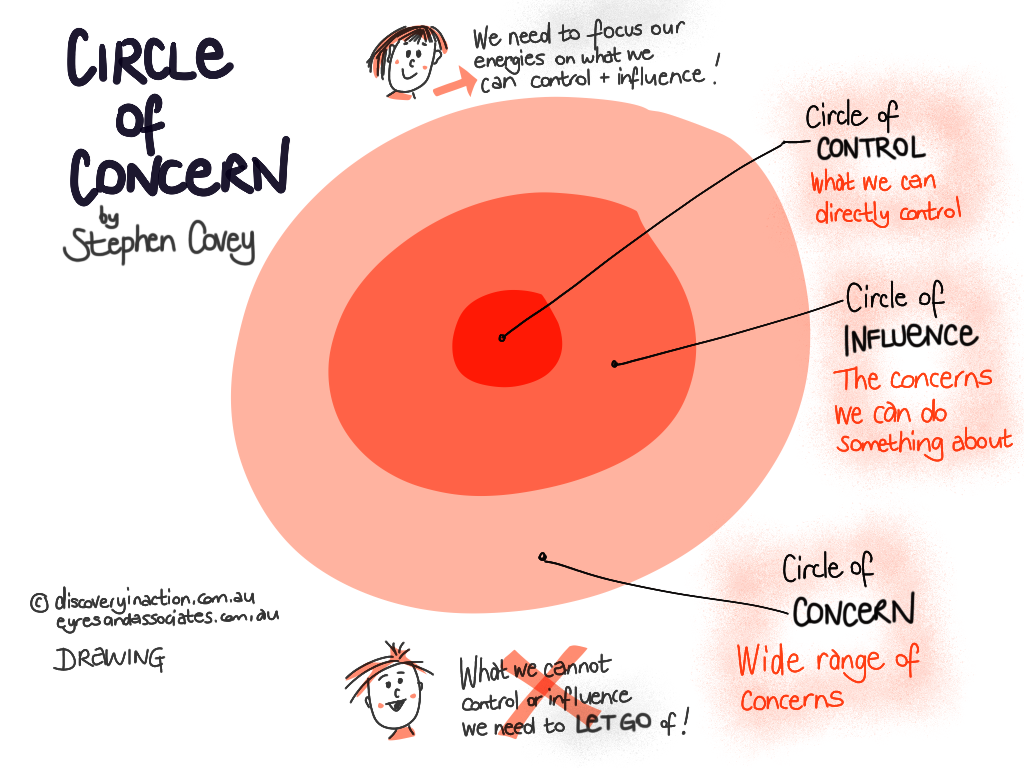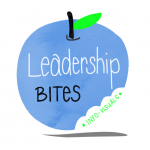Circle of concern v Circle of control

The concept
Popularised by Stephen Covey (1), this concept explores three spheres:
- The Circle of Concern – the wide range of worries we might have about a topic
- The Circle of Influence – a narrowing of the first circle into those worries we can do something about – either directly or indirectly
- The Circle of Control – an even smaller circle, representing the things we can actually directly do something about
Human beings can choose where they focus their energy and attention. If we focus on the concerns outside our influence, we risk increasing our stress and falling into the space of accusing, blaming, and victimisation.
By choosing to focus on the circle of influence – we move into a more proactive space. Rather than spending energy on things we can do nothing about, we can take steps that make a positive difference – calling on our strengths and connections. And we can also choose to let go of concerns that are not serving us well.
Why it’s useful
Facilitating this thinking in yourself, or in others, helps to limit wasteful rumination and inaction. Altering thinking to a proactive focus can enhance productivity, help people see a greater connection to progress and achievement, and also to build resilience.
How/when to apply it
When your team member is trying to make sense of a challenge, consider:
- Sharing the concept with them and the ideas behind it.
- Draw a circle and have them brainstorm all the areas of concern for the current issue.
- On another page, draw two circles – this time with the circle of influence in the middle. Referring to the first circle, ask questions to help identify things that are in their sphere of influence – things they can either control or influence – and clearly identify those things that are not. Jot them down.
- When you hear a response such as “I can’t do anything about that?” challenge that thinking to see if there is any room to expand the sphere of influence – “What would need to happen for that to change?” What is one small thing that could help here?’ Self-limiting beliefs might be at play here.
- Once it is clear what is outside the sphere of influence and control – help them understand that there is no value in spending any more time worrying about them. It is time to put them to one side and ‘let them go’.
- Encourage them to commit to an action plan
- Agree appropriate touch points to check–in on progress.
Want more?
Want a 2 page summary of this ‘Leadership Bite’?
Click this link to access a printable 2 page summary of this ‘Leadership Bite’

Want to see the other ‘Leadership Bites’?
Click here to see them.
Want to see previous posts on a similar topic – click here
(1) Original source of concept – Covey, S.R. (2013). The 7 Habits of Highly Effective People: Powerful Lessons in Personal Change. New York: RosettaBooks LLC.
